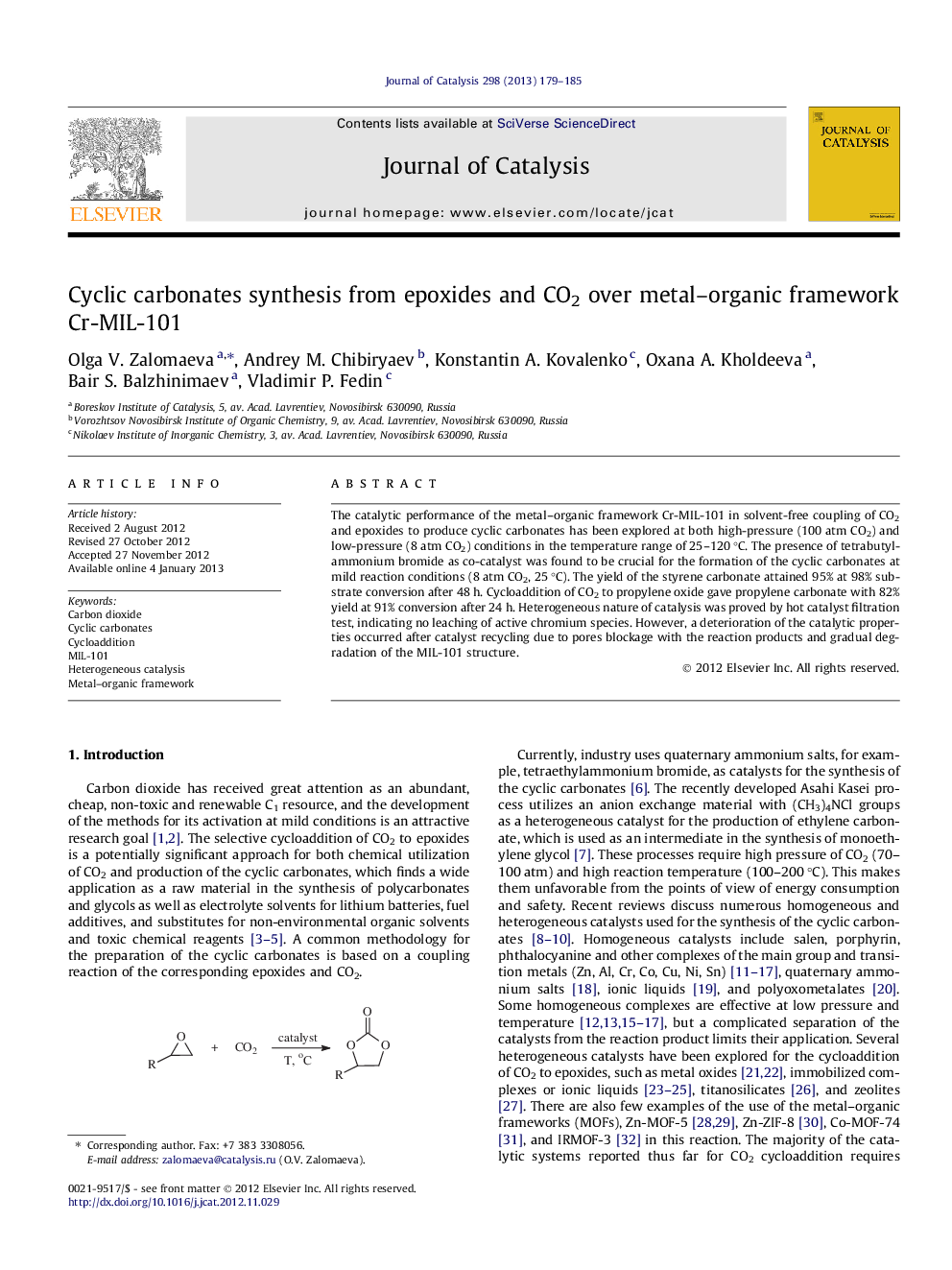| Article ID | Journal | Published Year | Pages | File Type |
|---|---|---|---|---|
| 61320 | Journal of Catalysis | 2013 | 7 Pages |
The catalytic performance of the metal–organic framework Cr-MIL-101 in solvent-free coupling of CO2 and epoxides to produce cyclic carbonates has been explored at both high-pressure (100 atm CO2) and low-pressure (8 atm CO2) conditions in the temperature range of 25–120 °C. The presence of tetrabutylammonium bromide as co-catalyst was found to be crucial for the formation of the cyclic carbonates at mild reaction conditions (8 atm CO2, 25 °C). The yield of the styrene carbonate attained 95% at 98% substrate conversion after 48 h. Cycloaddition of CO2 to propylene oxide gave propylene carbonate with 82% yield at 91% conversion after 24 h. Heterogeneous nature of catalysis was proved by hot catalyst filtration test, indicating no leaching of active chromium species. However, a deterioration of the catalytic properties occurred after catalyst recycling due to pores blockage with the reaction products and gradual degradation of the MIL-101 structure.
Graphical abstractThe metal–organic framework Cr-MIL-101 was found to be active in the solvent-free coupling of CO2 and epoxides to produce cyclic carbonates at both high-pressure (100 atm CO2) and low-pressure (8 atm CO2) conditions in the temperature range of 25–120 °C.Figure optionsDownload full-size imageDownload high-quality image (165 K)Download as PowerPoint slideHighlights► Cr-MIL-101 is an effective catalyst for the synthesis of cyclic carbonates. ► The presence of TBABr co-catalyst is required at room temperature. ► The possibility of the catalyst recovery and recycling was explored.
